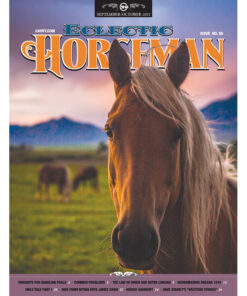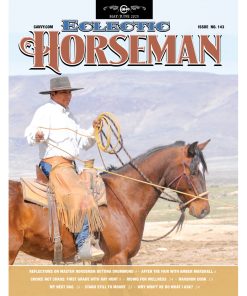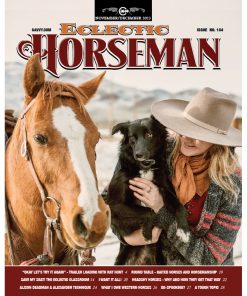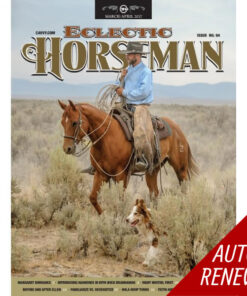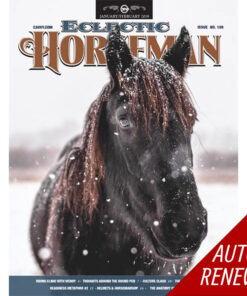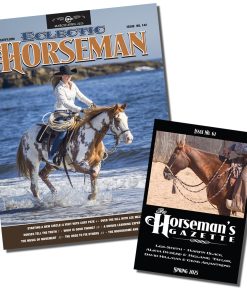This article originally appeared in Issue No.107
That’s not a new concept. But what does that mean?
I guess it can mean different things to different people because I see many different applications of it. Quite often I see horses that overbend in the neck; in other words, if the outside rein is not there to stop the horse from overbending the horse’s ribs go out against the outside leg.
There is a balance to everything. We can have too much of a good thing and create a bad thing. We need the bend in our horses to direct them in a balanced way, but we can get them too soft and supple to the inside rein to the point that we have to have an outside rein to stop them from over bending.
If we have the feel to acknowledge the horse preparing, and wait so the horse can perform for us without our doing too much, we can prevent creating problems. We only need to start the horse in the right direction and then release. This is where timing is important. If we have the timing we can acknowledge each step and direct each step as necessary. We draw the inside rein and with our outside leg we put life in the feet and release when they respond, then repeat this with the next step. Steady pressure makes horses dull and heavy, pressure and relief in the right proportions with the feet is what keeps a horse light and responsive.
What I see is the inside rein might be the primary rein, but when it causes the hindquarters to move out the opposite direction, the outside rein becomes just as effective to prevent overbending the horse.
If we pull the inside rein back or out too much we can easily create too much bend. Also when this happens the horse usually ends up ignoring the outside leg to whatever extent while trying to stay balanced by stepping the hindquarters out.
If we position the outside rein across the neck to push the shoulder we can create a counterbend, restrict forward motion, and just confuse the horse and make them resistant. Then we can get too much pressure on both reins, the outside leg, and possibly the inside leg when forward motion becomes a problem caused from the pressure of both reins, and then we can have horses that are heavy and dull from all the rein and leg pressure.
When we have too much effect from the outside leg on the more responsive horse, it can create bend in the poll to the outside tipping their nose out, putting them in a counterbend, and they can be off balance. This can make the horse stiff in the jaw and neck and can result in a heavy and dull horse.
But then quite often the solution for the heavy or dull horse to our reins is to flex the horse to get the soft feel again. Then the horse is refreshed on being suppled and giving to the inside rein again, and the cycle continues.
Think of the inside rein to only direct the horse and the outside leg to drive the horse. This means only the inside rein positions the horse’s head and neck. The position of the rein can be more important than the amount of pressure. If the rein is out and or back too much, it can cause too much bend. If the rein is forward and up slightly, the neck and shoulders can stay straighter and lighter to the inside hand.
If we learn to measure out just the right pressure in just the right position, the outside rein will not be needed.
Here’s a very simple test of our feel, timing, and balance, in my opinion. Simply put your outside hand on the horse’s neck with a loose rein while you raise the inside rein up close to the horse’s neck without doing enough to cause too much bend, and wait. Then lightly put some outside leg on your horse to create forward motion toward your inside rein.
This simple request can answer several things with your horse and how you are communicating with them. If they haven’t been overflexed, their front feet should go toward their nose and the hind feet toward their front. With the inside rein and outside leg, only!
You can grade your own paper.
Can you position the head where you only see the inside eyelashes without using the outside rein to stop the bend?
Can you start forward motion with your outside leg without the shoulder falling outside or inside of the directions of the nose? To me when we can find just the right proportion of influence with the inside rein and the outside leg, nothing else is needed.


